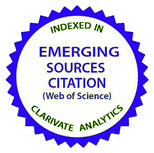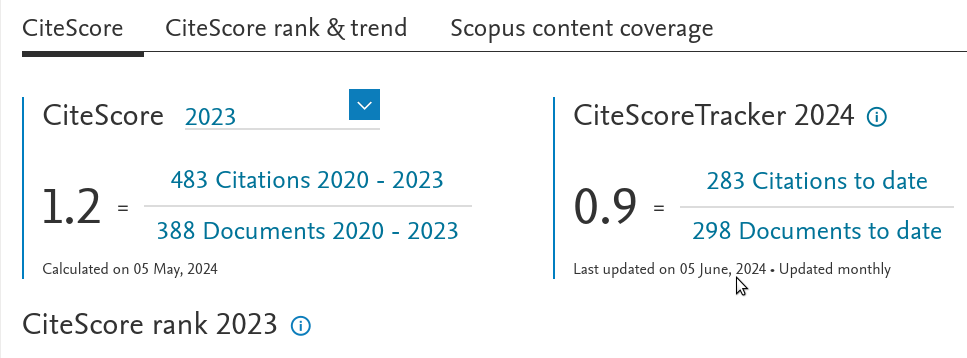Зв’язок між параметрами порядку модуляції густини і надлишкового об’єму при описі стаціонарних структурних станів межового мастила
DOI:
https://doi.org/10.15407/ujpe66.11.993Ключові слова:
межове мастило, сила тертя, переривчастий режим ковзання, параметр порядку, фазовий перехiдАнотація
В рамках теорiї фазових переходiв Ландау з використанням модуляцiї густини i надлишкового об’єму в ролi параметрiв порядку описано фазовий перехiд другого роду мiж структурними станами межового мастила, затиснутого мiж атомарно-гладкими твердими поверхнями. Знайдено зв’язок мiж таким чином визначеними параметрами порядку. Дослiджено стацiонарнi стани мастильного матерiалу в залежностi вiд керуючих параметрiв – температури мастила, пружної деформацiї в змащувальному шарi i зовнiшнього навантаження на поверхнi тертя. Проведено моделювання кiнетики плавлення в рамках механiчного аналога трибологiчної системи iз пружнiстю.
Посилання
M. Shisode, J. Hazrati, T. Mishra, M. de Rooij, C. ten Horn, J. van Beeck, T. van den Boogaard. Modeling boundary friction of coated sheets in sheet metal forming. Tribol. Int. 153, 106554 (2021).
https://doi.org/10.1016/j.triboint.2020.106554
R.I. Taylor, N. Morgan, R. Mainwaring, T. Davenport. How much mixed/boundary friction is there in an engine -
and where is it? Proc. Inst. Mech. Eng. J 234, 1563 (2020).
J. Zhang, Y. Meng. Boundary lubrication by adsorption film. Friction 3, 115 (2015).
https://doi.org/10.1007/s40544-015-0084-4
H. Yoshizawa, J. Israelachvili. Fundamental mechanisms of interfacial friction. 2. Stick-slip friction of spherical and chain molecules. J. Phys. Chem. 97, 11300 (1993).
https://doi.org/10.1021/j100145a031
O.M. Braun, A.G. Naumovets. Nanotribology: Microscopic mechanisms of friction. Surf. Sci. Rep. 60, 79 (2006).
https://doi.org/10.1016/j.surfrep.2005.10.004
J.N. Israelachvili. Intermolecular and Surface Forces, 3rd edition (Academic Press, 2011).
https://doi.org/10.1016/B978-0-12-391927-4.10001-5
B.N.J. Persson. Theory of friction: The role of elasticity in boundary lubrication. Phys. Rev. B 50, 4771 (1994).
https://doi.org/10.1103/PhysRevB.50.4771
A.E. Filippov, J. Klafter, M. Urbakh. Friction through dynamical formation and rupture of molecular bonds. Phys. Rev. Lett. 92, 135503 (2004).
https://doi.org/10.1103/PhysRevLett.92.135503
I.A. Lyashenko, V.N. Borysiuk, N.N. Manko. Statistical analysis of self-similar behaviour in the shear induced melting model. Cond. Matt. Phys. 17, 23003 (2014).
https://doi.org/10.5488/CMP.17.23003
V.L. Popov. Thermodynamics and kinetics of shear-induced melting of a thin layer of lubricant confined between solids. Tech. Phys. 71, 605 (2001).
https://doi.org/10.1134/1.1372955
F. Porcheron, B. Rousseau, M. Schoen, A.H. Fuchs. Structure and solvation forces in confined alkane films. Phys. Chem. Chem. Phys. 3, 1155 (2001).
https://doi.org/10.1039/b008828p
M. Schoen, F. Porcheron. Collective dynamics near a phase transition in confined fluids. Eur. Phys. J. E 12, 5 (2003).
https://doi.org/10.1140/epjed/e2003-01-002-8
M. Schoen, F. Porcheron. Collective dynamics near fluid phase transitions. Phys. Rev. E 67, 051202 (2003).
https://doi.org/10.1103/PhysRevE.67.051202
P. Bryk, R. Roth, M. Schoen, S. Dietrich. Depletion potentials near geometrically structured substrates. Europhys. Lett. 63, 233 (2003).
https://doi.org/10.1209/epl/i2003-00517-6
S. Sacquin, M. Schoen, A.H. Fuchs. Fluid phase transitions at chemically heterogeneous, nonplanar solid substrates: Surface versus confinement effects. J. Chem. Phys. 118, 1453 (2003).
https://doi.org/10.1063/1.1529683
H. Bock, M. Schoen. Thermomechanical properties of confined fluids exposed to a shear strain J. Phys.: Condens. Matter 12, 1545 (2000).
https://doi.org/10.1088/0953-8984/12/8/301
I.A. Lyashenko. Phase Transitions between Kinetic Modes of Boundary Friction. Dr.Sci. Thesis (Sumy State University, 2016) (in Russian).
G.P. Ostermeier, V.L. Popov. Mesoparticle description of temperature- and shear-induced solid-liquid transitions. Fiz. Mezomekh. 3, No. 5, 33 (2000) (in Russian).
V.L. Popov. A theory of the transition from static to kinetic friction in boundary lubrication layers. Solid State Commun. 115, 369 (2000).
https://doi.org/10.1016/S0038-1098(00)00179-4
V.L. Popov. Thermomechanical model of crystalline elastoplastic media. Tech. Phys. Lett. 25, 815 (1999).
https://doi.org/10.1134/1.1262645
L.D. Landau, E.M. Lifshits. Statistical Physics, Part 1 (Pergamon Press, 1980).
https://doi.org/10.1016/B978-0-08-057046-4.50008-7
D.F. Kienle, T.L. Kuhl. Density and phase state of a confined nonpolar fluid. Phys. Rev. Lett. 117, 036101 (2016).
https://doi.org/10.1103/PhysRevLett.117.036101
I.A. Lyashenko. First-order phase transition between the liquidlike and solidlike structures of a boundary lubricant. Tech. Phys. 57, 17 (2012).
https://doi.org/10.1134/S1063784212010173
I.A. Lyashenko. Effect of the temperature dependence of the viscosity of pseudoplastic lubricants on the boundary friction regime. Tech. Phys. 58, 1016 (2013).
https://doi.org/10.1134/S106378421307013X
I.A. Lyashenko, A.E. Filippov, M. Popov, V.L. Popov. Effect of stress nonhomogeneity on the shear melting of a thin boundary lubrication layer. Phys. Rev. E 94, 053002 (2016).
https://doi.org/10.1103/PhysRevE.94.053002
I.A. Lyashenko, A.V. Khomenko, L.S. Metlov. Hysteresis phenomena of boundary friction. Fiz. Tekhn. Vysok. Davl. 21, 67 (2011) (in Russian).
I.A. Lyashenko, A.V. Khomenko, L.S. Metlov. Nonlinear thermodynamic model of boundary friction. J. Frict. Wear 32, 113 (2011).
https://doi.org/10.3103/S1068366611020061
E. Popova, V.L. Popov. Ludwig F¨oppl and Gerhard Schubert: Unknown classics of contact mechanics. Z. Angew. Math. Mech. 100, e202000203 (2020).
https://doi.org/10.1002/zamm.202000203
Order, Disorder and Criticality. Advanced Problems of Phase Transition Theory. Vol. 5. Edited by Yu. Holovatch (World Scientific, 2018).
G. Reiter, A.L. Demirel, J. Peanasky et al. The solidlike state of a confined liquid lubricant: Deformation and time effects. In: Physics of Sliding Friction. Edited by B.N.J. Persson, E. Tosatti (Kluwer, 1996), p. 119.
https://doi.org/10.1007/978-94-015-8705-1_7
A. Lemaˆıtre, J. Carlson. Boundary lubrication with a glassy interface. Phys. Rev. E 69, 061611 (2004).
https://doi.org/10.1103/PhysRevE.69.061611
A. Lemaˆıtre. Rearrangements and dilatancy for sheared dense materials. Phys. Rev. Lett. 89, 195503 (2002).
https://doi.org/10.1103/PhysRevLett.89.195503
L.D. Landau, E.M. Lifshitz. Theory of Elasticity (Pergamon Press, 1959).
L.M. Kachanov. Fundamentals of the Theory of Plasticity (Dover, 2004).
I.A. Lyashenko, V.N. Borysiuk, V.L. Popov. Dynamical model of the asymmetric actuator of directional motion based on power-law graded materials. Facta Univ. Ser. Mech. Eng. 18, 245 (2020).
https://doi.org/10.22190/FUME200129020L
G. Luengo, J. Israelachvili, S. Granick. Generalized effects in confined fluids: new friction map for boundary lubrication. Wear 200, 328 (1996).
https://doi.org/10.1016/S0043-1648(96)07248-1
L.D. Landau, I.M. Khalatnikov. Anomalous absorption of sound near second-order phase transition points. Dokl. Akad. Nauk SSSR 96, 469 (1954) (in Russian).
Downloads
Опубліковано
Як цитувати
Номер
Розділ
Ліцензія
Ліцензійний Договір
на використання Твору
м. Київ, Україна
Відповідальний автор та співавтори (надалі іменовані як Автор(и)) статті, яку він (вони) подають до Українського фізичного журналу, (надалі іменована як Твір) з одного боку та Інститут теоретичної фізики імені М.М. Боголюбова НАН України в особі директора (надалі – Видавець) з іншого боку уклали даний Договір про таке:
1. Предмет договору.
Автор(и) надає(ють) Видавцю безоплатно невиключні права на використання Твору (наукового, технічного або іншого характеру) на умовах, визначених цим Договором.
2. Способи використання Твору.
2.1. Автор(и) надає(ють) Видавцю право на використання Твору таким чином:
2.1.1. Використовувати Твір шляхом його видання в Українському фізичному журналі (далі – Видання) мовою оригіналу та в перекладі на англійську (погоджений Автором(ами) і Видавцем примірник Твору, прийнятого до друку, є невід’ємною частиною Ліцензійного договору).
2.1.2. Переробляти, адаптувати або іншим чином змінювати Твір за погодженням з Автором(ами).
2.1.3. Перекладати Твір у випадку, коли Твір викладений іншою мовою, ніж мова, якою передбачена публікація у Виданні.
2.2. Якщо Автор(и) виявить(лять) бажання використовувати Твір в інший спосіб, як то публікувати перекладену версію Твору (окрім випадку, зазначеного в п. 2.1.3 цього Договору); розміщувати повністю або частково в мережі Інтернет; публікувати Твір в інших, у тому числі іноземних, виданнях; включати Твір як складову частину інших збірників, антологій, енциклопедій тощо, то Автор(и) мають отримати на це письмовий дозвіл від Видавця.
3. Територія використання.
Автор(и) надає(ють) Видавцю право на використання Твору способами, зазначеними у п.п. 2.1.1–2.1.3 цього Договору, на території України, а також право на розповсюдження Твору як невід’ємної складової частини Видання на території України та інших країн шляхом передплати, продажу та безоплатної передачі третій стороні.
4. Строк, на який надаються права.
4.1. Договір є чинним з дати підписання та діє протягом усього часу функціонування Видання.
5. Застереження.
5.1. Автор(и) заявляє(ють), що:
– він/вона є автором (співавтором) Твору;
– авторські права на даний Твір не передані іншій стороні;
– даний Твір не був раніше опублікований і не буде опублікований у будь-якому іншому виданні до публікації його Видавцем (див. також п. 2.2);
– Автор(и) не порушив(ли) права інтелектуальної власності інших осіб. Якщо у Творі наведені матеріали інших осіб за виключенням випадків цитування в обсязі, виправданому науковим, інформаційним або критичним характером Твору, використання таких матеріалів здійснене Автором(ами) з дотриманням норм міжнародного законодавства і законодавства України.
6. Реквізити і підписи сторін.
Видавець: Інститут теоретичної фізики імені М.М. Боголюбова НАН України.
Адреса: м. Київ, вул. Метрологічна 14-б.
Автор: Електронний підпис від імені та за погодження всіх співавторів.

















